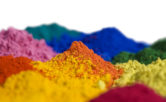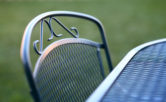
The Comprehensive Guide to Anti-Microbial Powder Coating
The buzzword of the year 2020 is probably Coronavirus, and understandably so. The virus has killed over a million people currently and infected many others. However, this would be a particularly bad time to catch E.coli, staph, or other preventable bacterial disease and have to go to the hospital. That is why a lot of people are taking better measures for the sake of their overall health.
One of the most underappreciated ways to protect ourselves from colonies of disease-causing bacteria is through the use of anti-microbial powder coating. This coating is a wonderful alternative to paint because it offers more protection to both the item coated and the people who touch it, besides being more durable and aesthetically pleasing.
About Anti-Microbial Powder Coating
Powder coating is a type of surface coating consisting of dry powder rather than wet paint. It is not new by any chance. Surfaces with a high level of wear or corrosion are coated with powder for a long-lasting finish that is resistant to chipping, scratching, flaking, rusting, and corrosion. More recently, antimicrobial additives are being added to such coating powder on sensitive surfaces such as gym equipment, railings, taps, hospital surfaces, and many others to kill harmful pathogens.
Bacteria and viruses can survive for hours, days, or even years outside the body when attached to surfaces. Plastics and metals are known to harbor large amounts of harmful disease-causing bacteria, especially on public surfaces. Hospitals and public transit are an especially common source of these bacteria. By applying such an antimicrobial coating, we can kill or control bacteria and prevent such disease in the first place.
What Does Anti-Microbial Mean in Powder Coating
The term anti-microbial is a derivative of the word “microbe” which means microorganisms such as bacteria, viruses, and fungi. These living things are usually too tiny to be seen, but many are capable of causing major health complications. Thus, the term antimicrobial refers to substances that can kill or inhibit these tiny organisms.
Anti-microbial powder coating is very effective against common bacteria, fungi, yeasts, molds, and other microorganisms. The bacteria that cause diseases such as UTIs (like Candida and Staph), tuberculosis (Mycobacterium tuberculosis), cholera (Vibrio Cholerae), food poisoning (Salmonella), and other gastrointestinal problems (Escherichia coli) can be all be fought with varying levels of success through anti-microbial powder coating. Note that antimicrobial powder may not be effective against viruses such as the coronavirus because these have different properties. There are special coatings for viruses that are currently undergoing research and testing, including one that might prove effective against SARS-CoV-2, the virus that causes the COVID-19 disease.
Every anti-microbial coating is different and can be targeted towards certain bacteria, especially now that we have so-called superbugs that are increasingly resistant to drugs. Two of the most common offenders are E. coli and Staph. Staphylococcus is showing serious resistance to drugs and various chemicals, developing into the infamous MRSA superbug that is even causing hospitals to shut down.
Antimicrobial coatings have shown a surprising range of effectiveness against these strains by reducing their population by 99.5% and more. They are even being used on the ISS to protect astronauts.
How Microbial Powder Coating Works
For decades, humans have been using special metals such as gold, silver, and copper because of their perceived “powers.” As late as the 20th century, people would take solutions of silver and gold to cure various diseases, and it worked.
Research has already shown that the interaction between ions of these metals and the microorganisms disrupts their biology in various ways and either prevents their multiplication or kills them outright. Objects made with these metals or having their coatings will kill various microbes that get into contact with them in hours, making them effectively self-sanitizing.
These properties influence the use of such metals to create antimicrobial powder coatings. Producers do it by infusing various compounds into the powder paint so that the metal ions continue to be effective against harmful pathogens for months and years, depending on the formulation used.
When it comes to superbugs that resist drugs, copper has proven especially useful. With laser treatment and various improvements, it forms tiny jagged surfaces that prevent microbes from settling on it and killing those that do.
Why Use Anti-Microbial Powder Coating
Bacteria are all around us, but it is the disease-causing pathogens we truly need to worry about. The drug-resistant strains developing every day are getting out of hand. In a list of high-priority pathogens against which new antibacterial treatment is needed, Staph and Salmonellae are Priority 2.
Now that health systems are effectively overwhelmed, it is everyone’s responsibility now to protect ourselves and others from these diseases, especially. Using powder paint in high-traffic and high threat areas ensures that these microbes do not multiply and cause diseases.
Manufacturers are already taking the lead in this fight by using antimicrobial powder on everything from toys to vehicles. Now, everybody can join in through third-party powder coating almost any surface and object they wish.
Where You Can Use Anti-Microbial Powder Coating
Top powder paint manufacturers such as AR Powder Coating produce antimicrobial powder coating paint for use in different applications. Various parts and surfaces can be powder coated including steel, aluminum, stainless steel, and plastics.
In a typical home, you can use antimicrobial powder coating on:
- Outdoor furniture
- Kitchen and bathroom surfaces
- Doorknobs and handles
- Fixtures such as taps
- Railings on stairs, balconies, and other surfaces
- Gates
- Vehicle door handles, steering, windows, etc
- Children’s playground and toys
- Any other surface that sees frequent touching by multiple people.
Powder coating is applied in various ways depending on the type of surface through electrostatic spray deposition on metal, fluidized bed application, among others.
You can also ship these products to be spray painted at an official facility, or have an expert do it for you. The same thing applies to schools, offices, public transit, and many other places.
Anti-Microbial Powder Coating for Residential and Industrial Use
Powder coating objects is a wonderful way to make sure they last long and retain their aesthetic qualities for much longer, but it is now much more important to protect ourselves and those we love. The Coronavirus pandemic has shown us just how fragile our health can be.
AR Powder Coating is a top producer of anti-microbial powder that can be used on any hard surface, regardless of the material. With the right pretreatment and application, the surface remains protected for a long time.
Whether you need large batches for use in industrial and commercial applications or smaller ones for home use, contact AR Powder Coating today to discuss the various solutions available.




